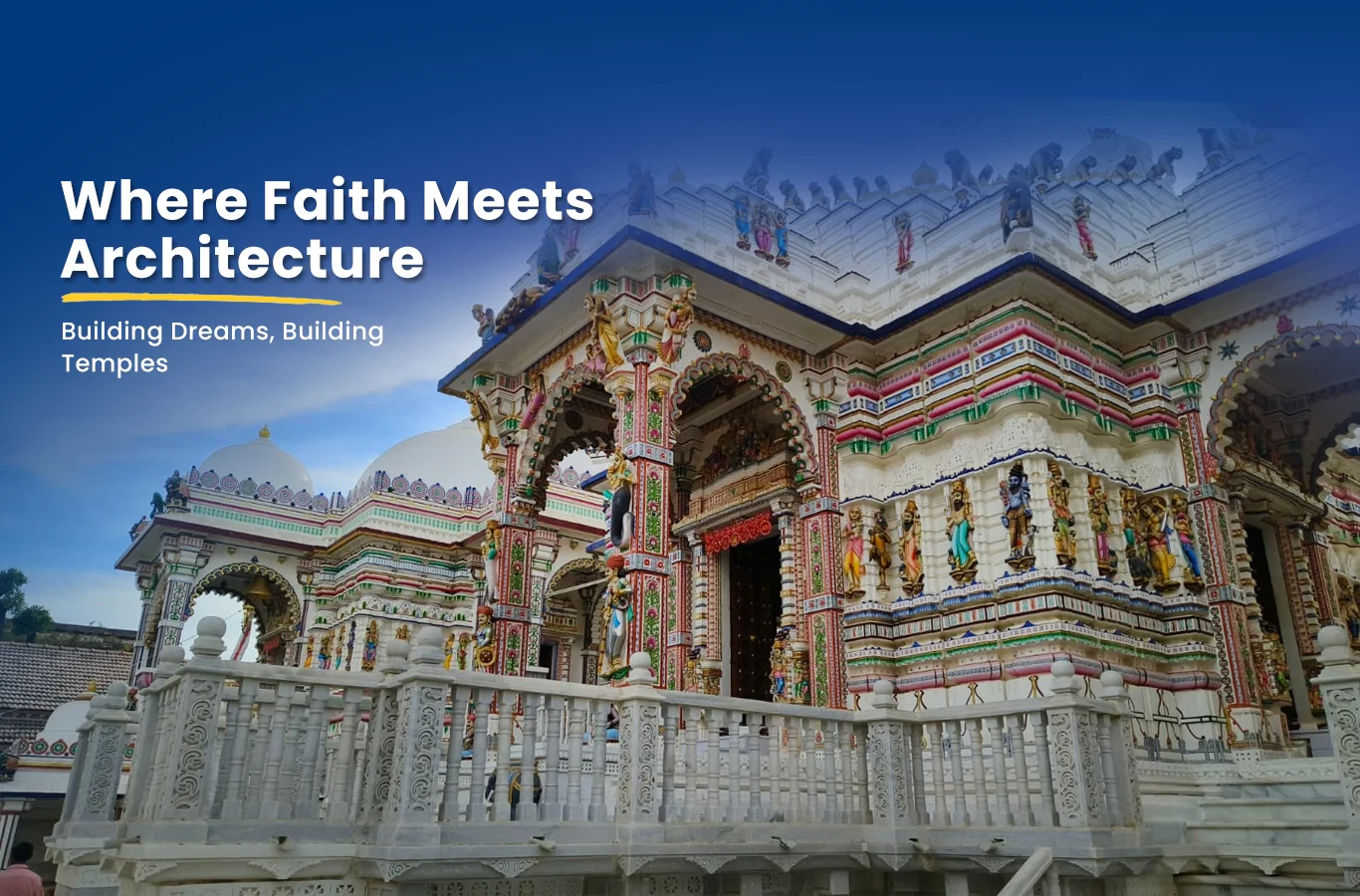Vastu Shastra, the ancient Indian science of architecture and spatial design, is integral to the construction of Hindu temples. Rooted in harmonizing human dwellings with cosmic energy, Vastu Shastra ensures that Hindu Mandirs are not just architecturally sound but spiritually uplifting. Whether you work with a Temple Construction Contractor in India, a Temple Contractor in Maharashtra, or a traditional Hindu Mandir Sompura, Vastu Shastra principles guide every aspect of temple design, from orientation to structural proportions.
What is Vastu Shastra?
Vastu Shastra, derived from ancient Indian scriptures, emphasizes the alignment of structures with natural forces and celestial bodies. For temples, this alignment is especially important as it enhances the divine energy within the sacred space, enabling devotees to experience spiritual peace.
Key Elements of Vastu Shastra in Hindu Mandir Design
1. Orientation of the Temple
The direction in which a temple is built holds immense significance in Vastu Shastra.
- East-facing Orientation: The primary entrance of most Hindu Mandirs is oriented toward the east to capture the first rays of the sun, symbolizing spiritual awakening.
- Placement of the Deity: The sanctum sanctorum (Garbhagriha) is positioned such that the deity faces east or west, ensuring devotees face auspicious directions during prayers.
Professional Temple Construction Contractors in India strictly adhere to these guidelines during the planning stage.
2. Site Selection and Land Preparation
Before construction begins, the land chosen for the temple is evaluated based on Vastu principles.
- Shape of the Land: Rectangular or square plots are considered ideal for temples.
- Soil Quality: Rituals are performed to purify the land, and the soil is tested for stability and energy balance. Traditional Hindu Mandir Sompuras often perform Bhoomi Puja (earth worship) to sanctify the site.
3. Proportions and Dimensions
Vastu Shastra prescribes precise measurements and ratios for temple design to maintain balance and symmetry.
- Shilpa Shastra Guidelines: These ancient texts outline the proportions for every element, from pillars to the temple tower (Shikhar).
- The measurements, often referred to as Angula or Hasta, ensure harmony with cosmic geometry.
4. Energy Flow within the Temple
The layout of a Hindu Mandir is designed to allow the free flow of positive energy.
- The Garbhagriha is the central point of energy concentration, while pathways for circumambulation (Pradakshina) enable devotees to absorb this energy.
- Open courtyards and well-lit interiors enhance spiritual vibrations.
Role of Vastu Shastra in Specific Temple Features
5. Sanctum Sanctorum (Garbhagriha)
The Garbhagriha, housing the deity, is the most sacred part of the temple.
- Location: It is located at the center or slightly toward the rear of the temple.
- Height: The ceiling of the sanctum is kept low to create a feeling of intimacy and devotion.
6. Temple Tower (Shikhar or Gopuram)
The towering structure above the Garbhagriha is designed to:
- Align with the upward movement of energy, symbolizing a connection between Earth and the divine.
- Follow specific geometrical proportions, as outlined by Vastu and Shilpa Shastra.
7. Pathways for Circumambulation (Pradakshina)
The pathways surrounding the Garbhagriha are designed to:
- Facilitate clockwise movement, which aligns with the flow of positive energy.
- Be spacious enough to allow free movement of devotees.
How Contractors Implement Vastu Principles
8. Expertise of Temple Construction Contractors
A professional Temple Construction Contractor in India ensures:
- Accurate alignment of the temple with cardinal directions.
- Compliance with traditional proportions while accommodating modern construction methods.
9. Role of Temple Contractors in Maharashtra
Local contractors in Maharashtra incorporate regional architectural styles with Vastu Shastra principles.
- Use of locally sourced materials like basalt and teak, aligning with environmental and spiritual harmony.
- Adherence to rituals specific to Maharashtrian temple traditions.
10. Contribution of Hindu Mandir Sompuras
Sompuras, the master architects of Hindu temples, play a vital role in implementing Vastu principles.
- Their deep knowledge of ancient scriptures ensures that every design element resonates with cosmic energy.
- They oversee the sculpting of idols and carvings, ensuring spiritual accuracy.
Benefits of Vastu-Compliant Temple Design
- Spiritual Peace: Proper alignment enhances the energy flow, creating a serene environment for worship.
- Longevity: Structures built using Vastu principles are believed to be more durable.
- Community Harmony: A well-designed temple becomes a focal point for community gatherings and spiritual upliftment.
Challenges in Applying Vastu Shastra
While Vastu Shastra offers comprehensive guidelines, practical challenges often arise.
- Urban Constraints: In cities, limited land availability may restrict ideal orientation or layout.
- Modern Materials: Balancing traditional principles with contemporary construction materials requires expertise.
Experienced Temple Construction Contractors in India and Temple Contractors in Maharashtra skillfully address these challenges by blending tradition with innovation.
Conclusion
The role of Vastu Shastra in Hindu Mandir design cannot be overstated. It ensures that temples are not just architectural marvels but also spiritual sanctuaries that resonate with divine energy.
When planning a temple, it’s essential to collaborate with an expert Temple Construction Contractor in India, a skilled Temple Contractor in Maharashtra, or a traditional Hindu Mandir Sompura. Their deep understanding of Vastu principles and architectural expertise ensures the temple serves its sacred purpose for generations to come.
By adhering to Vastu Shastra, Hindu Mandirs become spaces where spirituality, architecture, and cosmic harmony converge, enriching the lives of devotees and preserving India’s cultural heritage.

